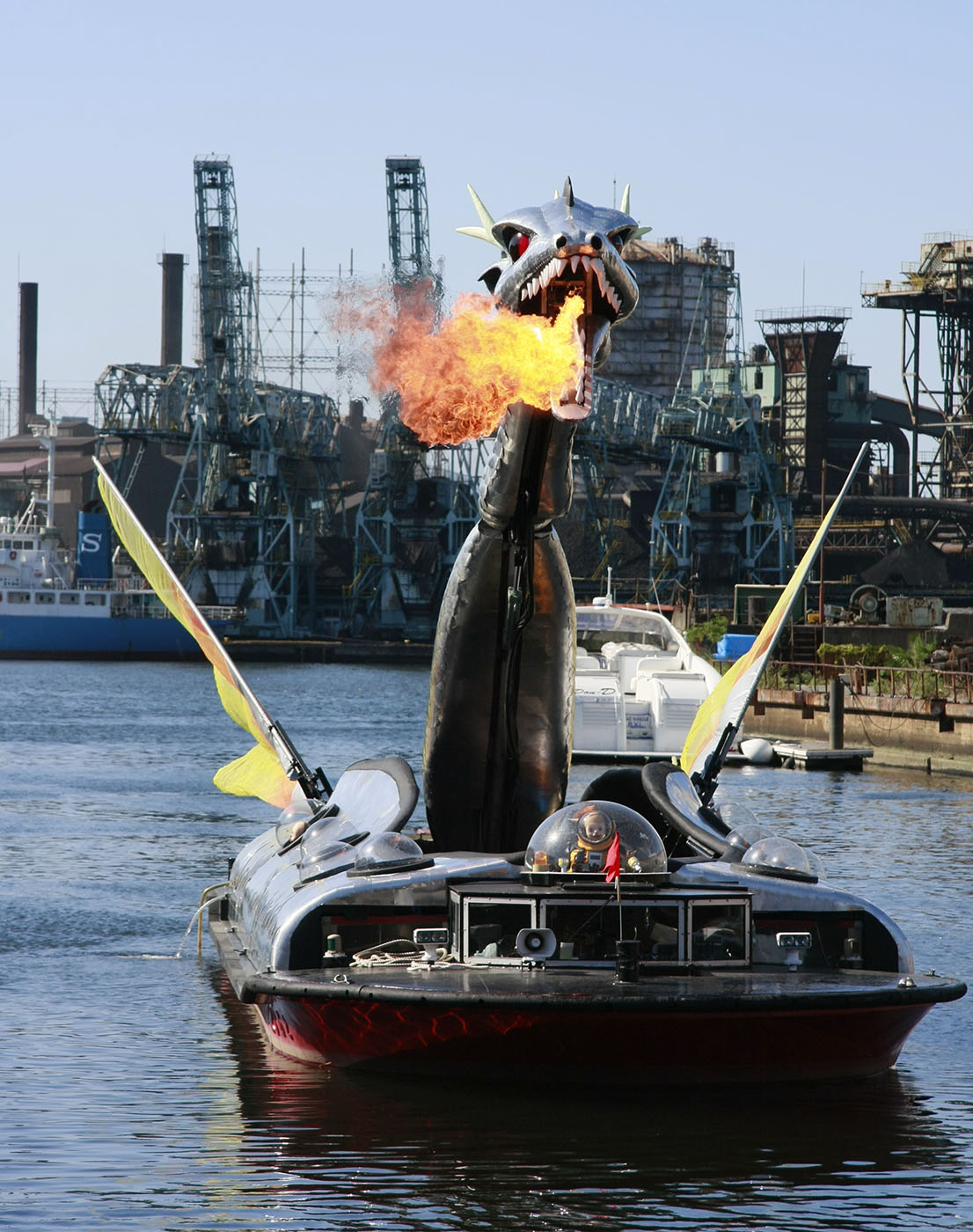AQUA METROPOLIS–Lucky Dragon [2009]
Change the Whole City into a Museum
Suito Osaka–Aqua Metropolis Osaka–2009 was an exposition organized as a joint event of private sectors and local government of Osaka prefecture and City of Osaka. The exposition was originally planned to be held at various venues but the scale and budget were cut in drastic amount due to some reasons including the the change of prefectural governor. The budget allocated to the artists were extremely tight.
Kenji Yanobe, one of the invited artists, decided to make and exhibit large amount of works within the low budget. He thought that this was the big opportunity to show the value of art to local government and citizens. He installed his works in well-known buildings in Osaka and tried to change the city itself into Yanobe’s museum. He installed Giant Torayan at Osaka City Hall, Cinema in the Woods at Osaka Prefectural Nakanoshima Library, works such as Survival System Train, Tanking Machine, Atom Suit and Torayan at Art Area B1 in Naniwabashi station of Keihan Railway, and Ultra—Black Sun at Creative Center OSAKA.
All these sites are public places with heavy traffic. As a new work for this exposition, he made Lucky Dragon, which was attached on a boat cruising the rivers in city of Osaka. Lucky Dragon was the English name of Daigo Fukuryu Maru, a Japanese tuna fishing boat which was exposed to and contaminated by nuclear fallout from the United States’ Castle Bravo thermo nuclear device test on Bikini Atoll in 1954. The boat is permanently exhibited at Daigo Fukuryu Maru Exhibition Hall in Tokyo.
In 2004, Yanobe made Cinema in the Woods a small sized theater which would serve as a shelter for children. For the theater, he reedited the animation films which where intended to give warning to children against the crisis of nulear war. The film were originally made and broadcasted in the United States during the time of Cold War. From the experience of showing Cinema in the Woods at Daigo Fukuryu Maru Exhibition Hall, he got a concept that Torayan would revive Daigo Fukuryu Maru. Lucky Dragon was intended to tell the revival of Daigo Fukuryu Maru by Torayan and also to show the revival of waterways that once served for active industries and commerce of Osaka.
Lucky Dragon was made as a head with slender neck. The making process was as follows; firstly, made a base with styrene foam and coat it with FRP (Fiber Reinforced Plastic) and fasten the aluminum scales with rivets onto the base. The dragon’s head and neck are
light and strong and it was attached to a boat and moved upward and downward. It emitted fire and water with a gas burner and a pump from the mouth. It was made within a month and it proved that the division of labor worked perfectly at ULTRA FACTORY.
Lucky Dragon was attached to a boat cruising the former Namura Shipyard site, now the site of Creative Center OSAKA. Torayan served as a steersman of the boat and left the dock to cruise from industrial areas to the central area of Osaka city, such as Nakanoshima and Dotonbori. During the exposition, the cruising events were held and audience saw Lucky Dragon from cruising boats, moving around the city.
Lucky Dragon and other Yanobe’s work were witnessed by many citizens and tourists in Osaka and were reported widely through various media. Consequently, the effect and value of his art works was recognized by local government. In prior to the exposition, he drew a picture book The World of Torayan: The Story of Lucky Dragon and made a story of turning imagination into reality at Suito Osaka–Aqua Metropolis Osaka–2009.
